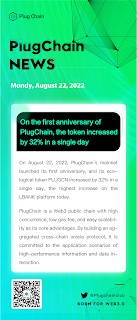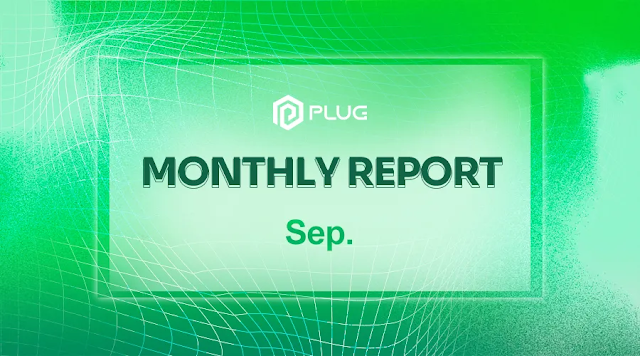Popular ChatGPT & Developing Oracle
Preface: The emergence of ChatGPT symbolizes a new industrial revolution about “smartness”. Then, the application of the oracle machine represents the Columbus journey of the blockchain transformation of “data”.
“Who are you?”
“I am a large language model trained by OpenAI. Help people answer questions and provide information. Since I am a computer program, I can’t perceive or think, and can only answer questions with existing data. If you have any questions , please let me know anytime.”
ChatGPT: mining data value
ChatGPT is the hottest topic recently. According to Fortune, ChatGPT reached a goal that took Facebook 10 months to reach — more than 1 million users — just five days after its release. On February 1st, ChatGPT monthly active users exceeded 100 million. IG took two years to achieve this data, TikTok took 9 months, and ChatGPT only took 60 days.
The degree of popularity is evident.
As the crystallization of the technology of the times, ChatGPT brings an unpredictable revolution. AIGC (AI Generated Content) represented by ChatGPT will change the world.
Bill Gates also said : The significance of the emergence of ChatGPT is no less than the birth of PC and the Internet.
With the birth of ChatGPT, its increasingly powerful AIGC (AI Generated Content) capabilities have caused many people to fall into a “career crisis”. Some people worry that AI will replace humans. In fact, it is not the first time that the talk of AI replacing human work has appeared, and it first appeared a few years ago.
According to the report “Unemployment and Employment: Labor Transformation in the Era of Automation” released by McKinsey Global Institute in December 2017, by 2030, it is conservatively estimated that 15% of the world’s people will change jobs due to the development of AI technology, and radical estimates will affect 30% of the global population, China expects that tens of millions to hundreds of millions of people will need to be re-employed by then.
When people still didn’t care about the predictions in the report, in September 2022, in the digital category of the Colorado State Fair art competition, the AI painting “Space Opera House” won the first place in one fell swoop, sparking once again a huge debate about whether AI can replace humans. Today, the emergence of ChatGPT has triggered a global discussion on the anxiety of occupational survival arising from the “threat” of AI to employment.
There is no doubt that ChatGPT is a masterpiece of major breakthroughs in the current artificial intelligence field. It is undeniable that ChatGPT still has many problems. Although ChatGPT is a large language model based on statistical laws and has a powerful language talent, it can only make associations and cannot complete “logical reasoning”. In this light, ChatGPT tends to produce convincing responses, which may contain “generated” factual errors, misrepresentations, and faulty data, as a natural language processing model, unaware of tens of petabytes of unsupervised training What is a “fact” in the data is more like a slippery “virtual assistant”.
In addition, during the training process, excessive “instruction” knowledge is injected in order to recognize human instructions. ChatGPT will be very sensitive to the “instruction” itself, and at the same time, it will not recognize context-independent ambiguous words that require “factual basis” to make judgments.
Perhaps, for most people ChatGPT is a qualified assistant, because it is proficient in all skills about human language(Or ChatGPT will be proficient in the foreseeable future), such as summarizing, translating, writing articles, style correction, translating, polishing, writing code, etc. Therefore, if workers engaged in these jobs cannot master the skills of using ChatGPT as an assistant, they may be the first to be replaced by AI.
In a nutshell, ChatGPT is a super tool, not super intelligence, and will not replace humans, but upgrade the industry. It will greatly lower the barriers to creativity and execution, complementing humans.
The CEO of WPP, the world’s largest advertising group, said: It is never AI that takes your job, but other people with AI tools.
AI has been developed for so many years, so why can ChatGPT become the dark horse of AI?
In the final analysis, it comes from the “utilization” of data.
At present, the major research direction of artificial intelligence is the NLP task (Natural Language Processing), that is, the machine must understand human language. And NL has two major directions, one is Google’s two-way (BERT) technology, and the other is OpenAI’s autoregressive (GPT) technology.
As early as June 2018, OpenAI proposed the first-generation GPT model. In October of the same year, Google announced the BERT model, which refreshed almost all the best records in the field of natural language processing, and opened the era of pre-training large models.
In the following four years, pre-trained language models such as BERT and GPT (GPT-1 and GPT-2, the predecessor of ChatGPT) have become the current technical trend in the field of natural language processing. These model parameters range from 300 million to 1.75 trillion, which is why they are called Large Language Model.
The essence of pre-training large models is to use larger models and more data to find a more general “language model” for humans. It is precisely because of this that large language models including BERT and GPT have obtained a considerable amount of vocabulary, syntax and semantic knowledge during the pre-training process, and only need a small amount of labeled data to refine the model to complete various tasks. such natural language tasks.
By mining the value of “data” to endow the scene with ecology, is this description very similar to “oracle machine”? However, ChatGPT is still a Web2.0 product with certain limitations.
If it is said that ChatGPT and AIGC completely disregard sovereignty, grab global data for training without any scruples, and finally evolve their own “super brain”. Then, the fundamental value of blockchain technology is “decentralization”, hoping to break this monopoly and reconstruct a new distributed network, so that ordinary people can regain their own data sovereignty.
Oracles: Linking Data Bridges
When it comes to blockchain, most people must think of Bitcoin, Ethereum, token speculation, mining, DeFi, NFT, and some Web3.0 empowerment scenarios such as GameFi and SocailFi that rely on concept packaging. However, how to make data “AI” is to let the “blockchain” understand the predictions of the real world and add them to the ecological empowerment of the scene. The oracle machine is very important, just like the current ChatGPT.
We all know that oracles and blockchains are very closely related. In blockchain, smart contracts can perform various operations such as money management, data storage, etc. However, smart contracts have no knowledge of events happening in the real world, which requires oracles. Because the oracle machine is a data bridge connecting the real world and the blockchain, it can convert events that occur in the real world into data that can be used in smart contracts.
In simple terms, oracles allow deterministic smart contracts to “react” to an uncertain external world. And isn’t ChatGPT just a corresponding “reaction” to the accessed data?
Among them, the main function of the oracle machine is to obtain and verify external data and input it into the blockchain. They can obtain data in a variety of ways, such as APIs, sensors, web crawlers, etc. In terms of verifying data, the oracle needs to ensure the authenticity and accuracy of the data.
Therefore, oracles should be carefully designed and tested to ensure reliable data. The verification process includes digital signatures, encryption algorithms, etc. However, the development of oracles faces challenges, and the biggest challenge is to ensure the reliability of data. The oracle machine needs to obtain a large amount of data and verify it.
If the blockchain is compared to a “black box”, then the oracle machine is a ray of light in the dark, illuminating the bit world.
The current blockchain ecology is still in its infancy. Compared with traditional industries, except for some achievements in the financial field, others are still a little barren. It still takes a long time to develop the utilization, retrieval, mining, and analysis of data.
Although many mainstream oracle public chains such as ChainLink, PlugChain, Oraclize, UMA, DIA, and API3 have emerged in the market, and have their own breakthroughs and innovations in the technical field, a closer look at ecological development, scene empowerment, and commercial applications, There is still a long way to go.
It’s like ChatGPT needs to be smarter, it needs more and larger data training. If the blockchain world needs to be smarter, the oracle machine’s data reading, transmission, and capture are required to be more accurate and efficient.
At the same time, in terms of more decentralization, single-source APIs are easily cracked and operated, and centralized oracles seem useless. Therefore, nodes that focus on decentralized oracle networks like ChainLink, PlugChain, and NEST have higher accuracy in capturing data. Because their network nodes are obtained from multiple sources, the data error rate is reduced through data aggregation weighting.
By the way, in terms of scalability, PlugChain has the ability to process 100,000 transactions per second with high throughput, and the gas fee is much lower than other public chains. Because of this, data delay is almost eliminated, more accurate data can be obtained, and price deviation and slippage are reduced. Also in terms of operability, PlugChain is compatible with mainstream public chains such as Ethereum, Cosmos, Polygon, Cardano, Avalanche, and BSC. It also performs extremely well on aggregated cross-chains.
In short, as a bridge connecting the real world and the blockchain, the oracle machine has great significance and potential. Not only can they help smart contracts perform various tasks better, but also solve real-world problems. At the same time, with the advancement of technology, the future of oracles will be broad.
Conclusion: Finally, when comparing ChatGPT and oracle machines, it is not difficult to find a core point: the value of both is the extraction of “data value”, the empowerment of “data ecology”, and the support of “scenario application”. drive. The only difference is that one is in Web2.0 and the other is in Web3.0. With the rapid development of technology, the boundary between Web2.0 and Web3.0 will become more and more blurred. When the oracle connects the data of the physical world to the bit world, the AI computing power represented by ChatGPT will continue to tap the “data potential”. “.
At that time, the ecology of Web3.0 is no longer barren, and it is no different from the real world. That is the real Metaverse.








Comments
Post a Comment